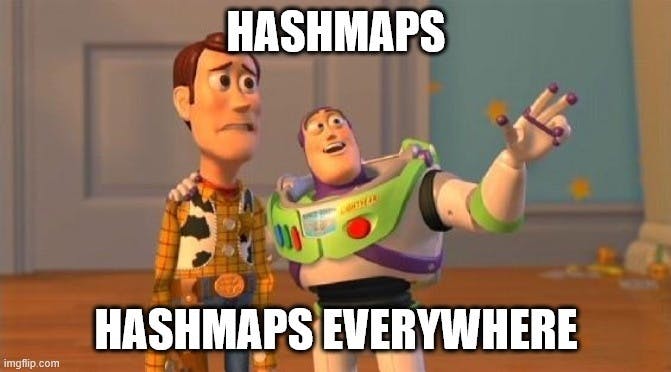
"A hash map, or hash table, is a data structure that implements an associative array abstract data type, a structure that can map keys to values. The key is used to uniquely identify a value in the map, and the value is the data that is being stored. Hash maps are designed to provide fast insertion, deletion, and lookup of key-value pairs."
"The average time complexity for these operations is O(1), which means that they can be performed in constant time! This feature makes hash maps probably the most used data structure in programming, however, there are some caveats to this."
"The worst-case time complexity for these operations is O(n), which can happen in certain scenarios, and the more we know about the internals, the more likely we are to avoid these scenarios."
"A hash table uses a hash function to compute an index, also called a hash code, into an array of buckets or slots, from which the desired value can be found."
A hash map is a data structure that implements an associative array, mapping keys to values. It allows for fast insertion, deletion, and lookup with an average time complexity of O(1). However, the worst-case time complexity can reach O(n) under certain conditions. Understanding the internal workings of hash maps, especially the role of hash functions in computing indexes, can help avoid worst-case scenarios and ensure efficient data retrieval. Their widespread use in programming is largely due to their efficiency in handling large datasets and key-value pair operations.
Read at Hackernoon
Unable to calculate read time
Collection
[
|
...
]